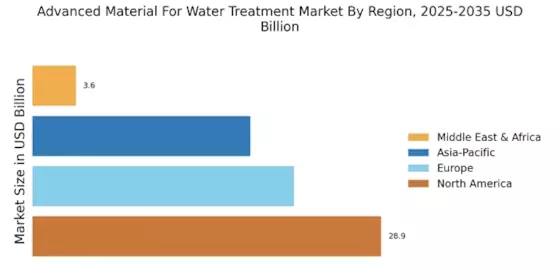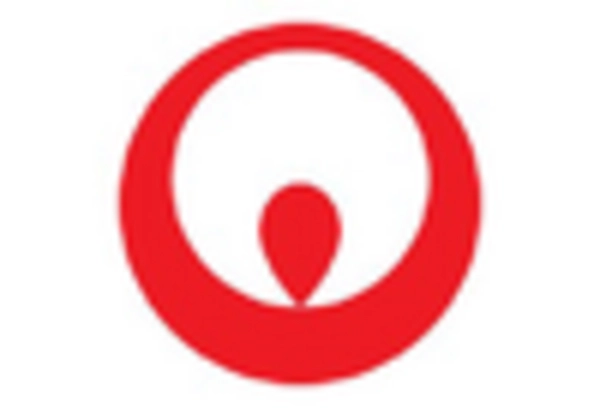Rising Water Scarcity
The increasing prevalence of water scarcity is a critical driver for the Advanced Material For Water Treatment Market. As populations grow and industrial demands escalate, the pressure on freshwater resources intensifies. Reports indicate that by 2025, nearly 1.8 billion people may live in areas with absolute water scarcity. This situation compels governments and industries to seek innovative solutions, including advanced materials that enhance water treatment processes. The need for efficient filtration and purification technologies is paramount, as traditional methods often fall short in addressing the complexities of modern contaminants. Consequently, the Advanced Material For Water Treatment Market is poised for growth as stakeholders invest in cutting-edge materials that promise improved efficiency and sustainability in water management.
Regulatory Pressures and Standards
Stringent regulations regarding water quality and safety are driving the Advanced Material For Water Treatment Market. Governments worldwide are implementing more rigorous standards to ensure safe drinking water and protect ecosystems. For instance, the introduction of regulations such as the Safe Drinking Water Act in various regions mandates the removal of specific contaminants, thereby increasing the demand for advanced materials that can meet these requirements. The market is witnessing a shift towards materials that not only comply with existing regulations but also anticipate future standards. This proactive approach is likely to foster innovation within the Advanced Material For Water Treatment Market, as companies strive to develop solutions that exceed regulatory expectations and enhance public health.
Urbanization and Industrialization Trends
The trends of urbanization and industrialization are significantly impacting the Advanced Material For Water Treatment Market. Rapid urban growth leads to increased water demand and, consequently, a greater need for effective water treatment solutions. As cities expand, the infrastructure must adapt to manage the rising volumes of wastewater and ensure safe drinking water for residents. This scenario creates opportunities for advanced materials that can enhance the efficiency of water treatment systems. Moreover, industrial activities often introduce complex pollutants into water sources, necessitating the development of specialized materials capable of addressing these challenges. The Advanced Material For Water Treatment Market is thus positioned for growth as it responds to the evolving needs of urban and industrial landscapes.
Technological Advancements in Material Science
Technological advancements in material science are significantly influencing the Advanced Material For Water Treatment Market. Innovations such as nanotechnology and membrane technology are leading to the development of materials that offer superior filtration capabilities and contaminant removal efficiencies. For example, the introduction of nanomaterials has shown promise in enhancing the adsorption of pollutants, thereby improving overall water quality. The market is expected to expand as these technologies become more accessible and cost-effective. Furthermore, the integration of smart technologies, such as IoT-enabled sensors, is likely to enhance the monitoring and management of water treatment processes, thereby driving demand for advanced materials that can support these innovations.
Growing Awareness of Environmental Sustainability
The increasing awareness of environmental sustainability is a pivotal driver for the Advanced Material For Water Treatment Market. As consumers and industries alike become more conscious of their environmental impact, there is a growing demand for sustainable water treatment solutions. Advanced materials that are eco-friendly and capable of reducing energy consumption during water treatment processes are gaining traction. This shift is reflected in the rising investments in research and development aimed at creating materials that minimize waste and promote resource efficiency. The Advanced Material For Water Treatment Market is likely to benefit from this trend, as stakeholders seek to align their operations with sustainable practices and meet the expectations of environmentally conscious consumers.


















Leave a Comment